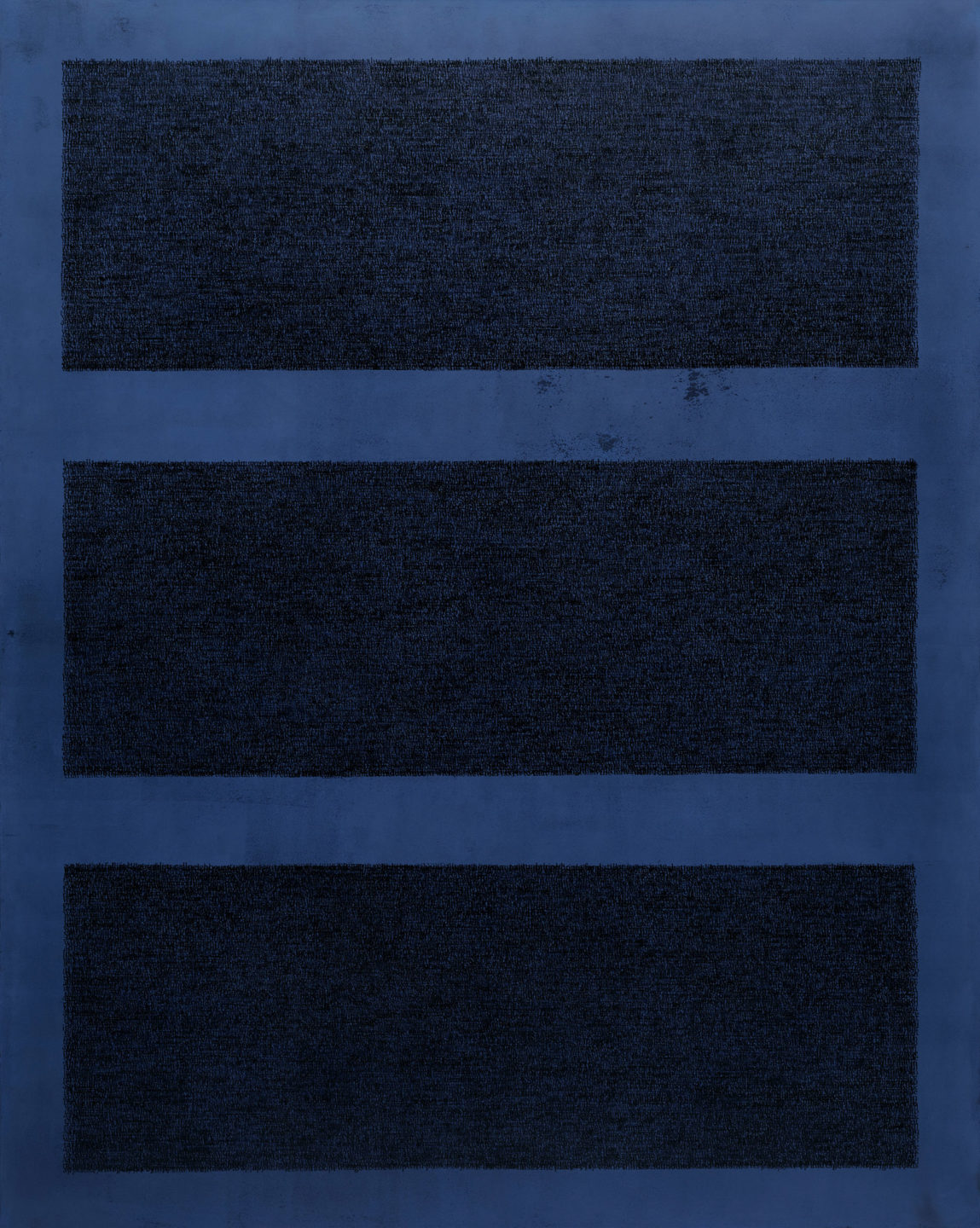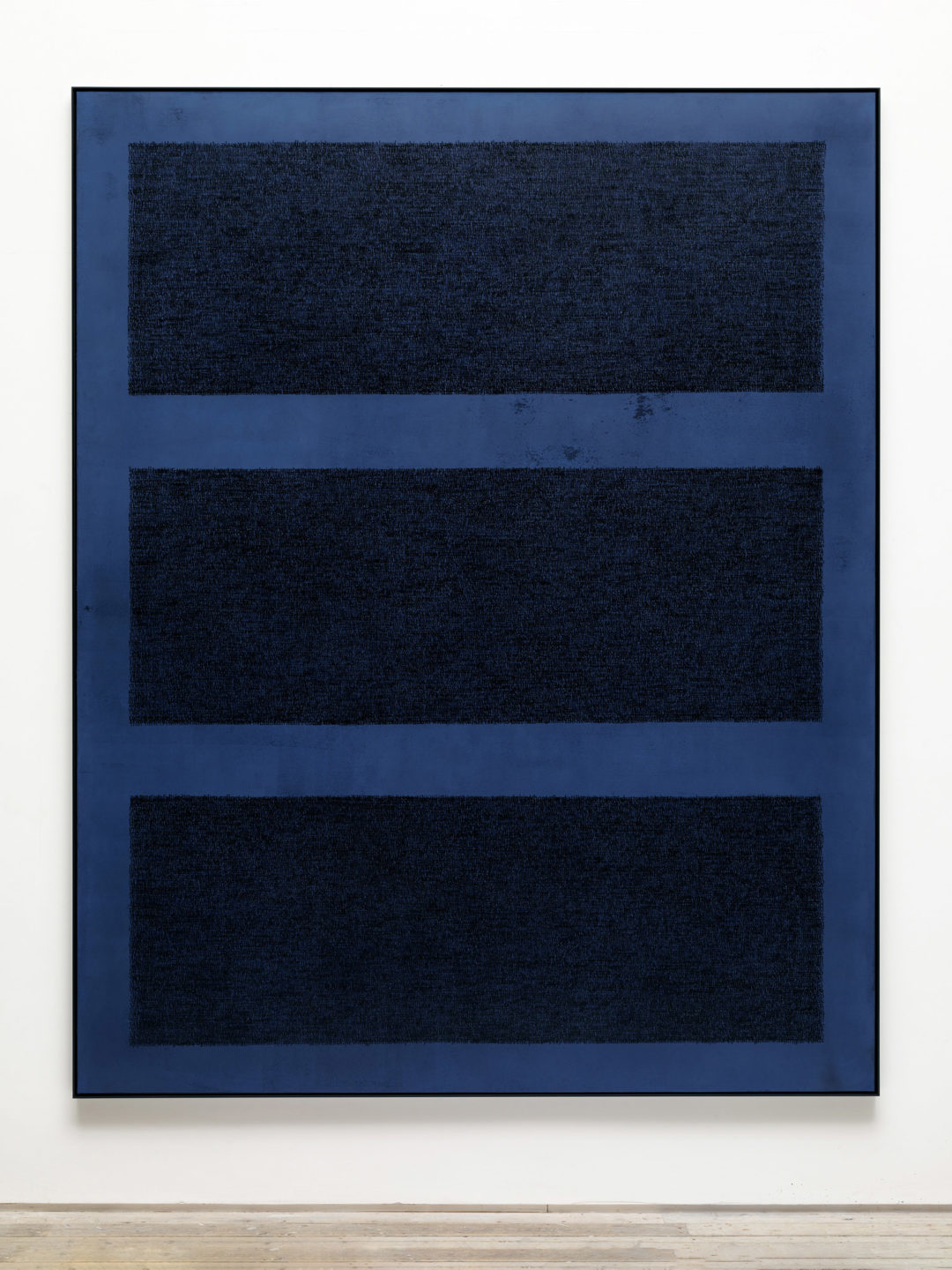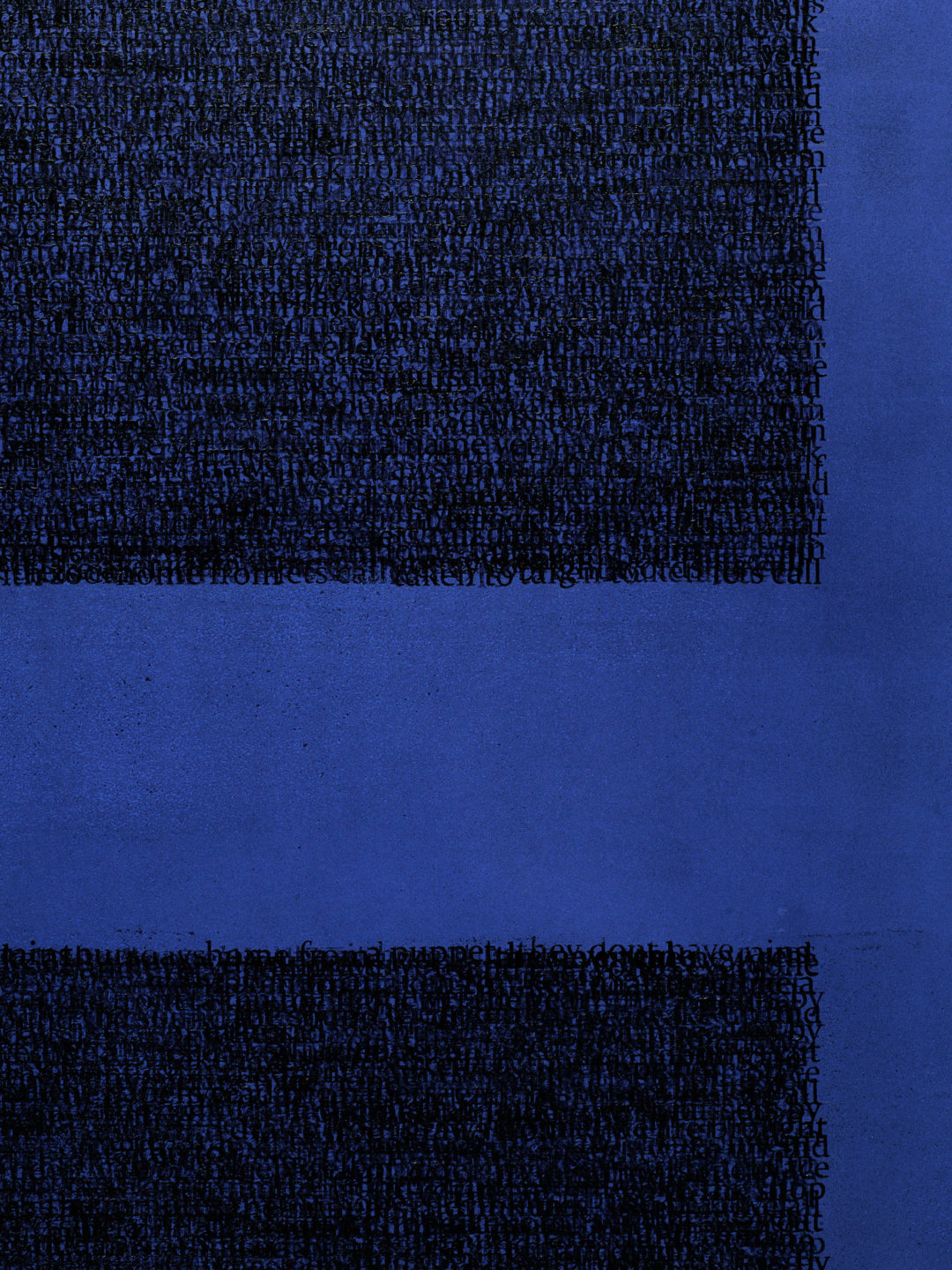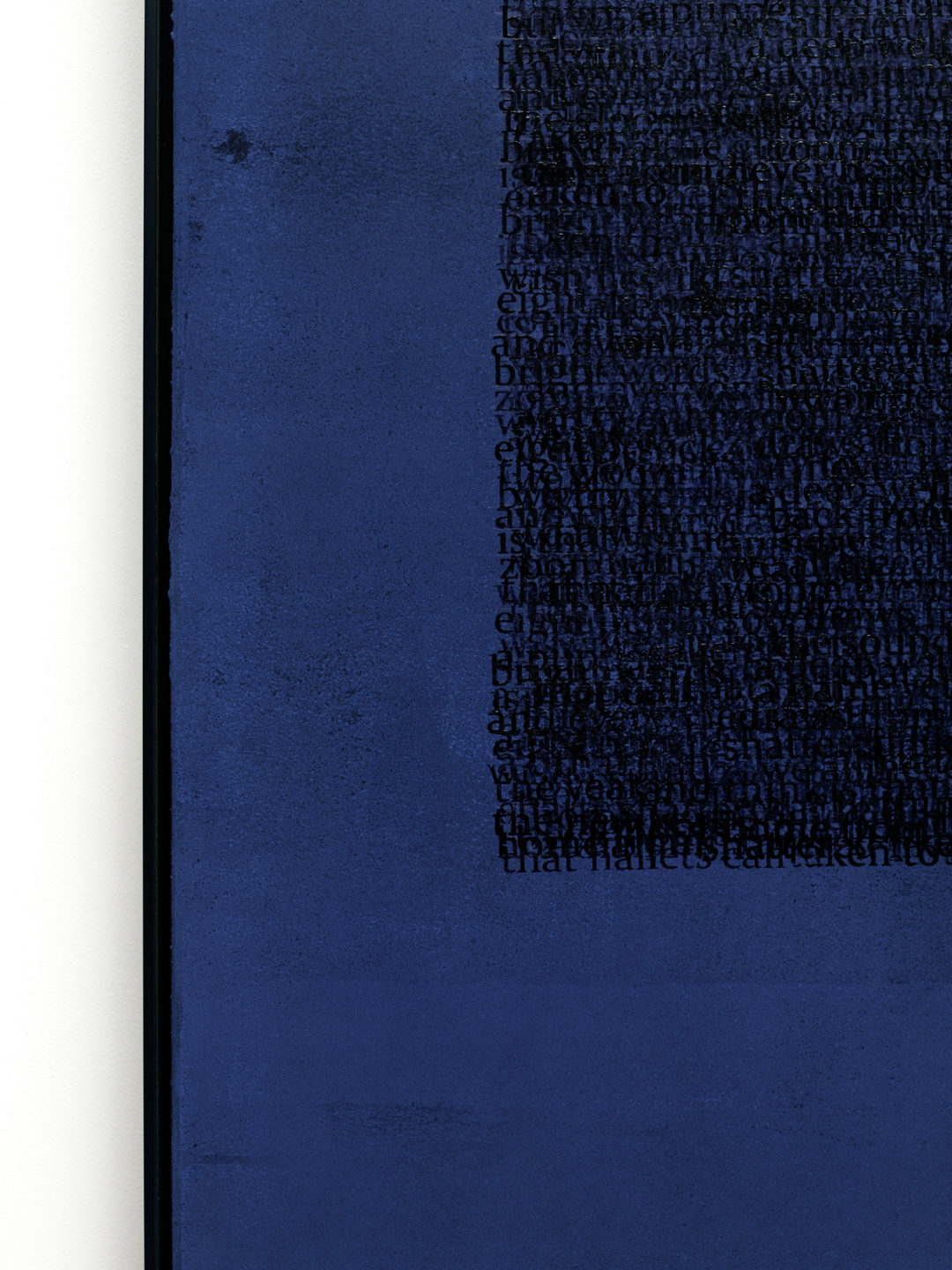Idris Khan Shrugged to a Standstill 2020
Oil based ink on gesso, on aluminium
250.5 x 200 cm
98 5/8 x 78 3/4 in
On display in the upper gallery is an enveloping installation of large-scale blue paintings. Khan has often drawn inspiration from key philosophical and theological texts in his work, yet increasingly his own writings have become a conduit for investigating memory, creativity and the layering of experience. Unified by the use of the colour blue, using the artist’s own mix of gesso, rabbit skin glue, slate dust, marble dust and Prussian blue and Ultramarine blue pigments, the paintings on view feature passages of texts in which Khan expresses thoughts, feelings and responses to the past year.
Diaristic in nature, these texts, once repeated and layered in sonorous blue oil, are distilled, a number of fragmentary experiences and disparate ideas becoming a single image. In this manner, while Khan ultimately eradicates the meaning of the original text, he constructs an abstract and universal language.
Moving between the works in a specially conceived installation, the viewer becomes aware of the way in which each painting is subtly different. Khan explains, ‘I like the perception of seeing the paintings from a distance. They look like blocks of colour, and as you get closer you see the words being revealed. Gesso is a very absorbent surface, so the first layer sinks into it, almost freezing the words in time. And then as I layer, the language is eradicated. Often people ask me what’s written, but in the end it doesn’t matter. The words are there at the start of the process, but as I make the paintings, the words lose their meaning, and what’s left is an abstract painting of internalised thoughts. The horizontal bands move through each work around the room and appear to rise and fall almost like breathing, shifting in a rhythmical way that also relates to the musicality of the works in the Vivaldi series downstairs. In this show I’m inviting the viewer to fall into the words, colour and musical marks and bring their own thoughts and emotions to them.’
It is in this contemplative space that both the processes of Minimalist art and allusions to the role of repetition in the world’s major religions are brought into focus – as a vehicle for transcendence and a conduit of the sublime.



